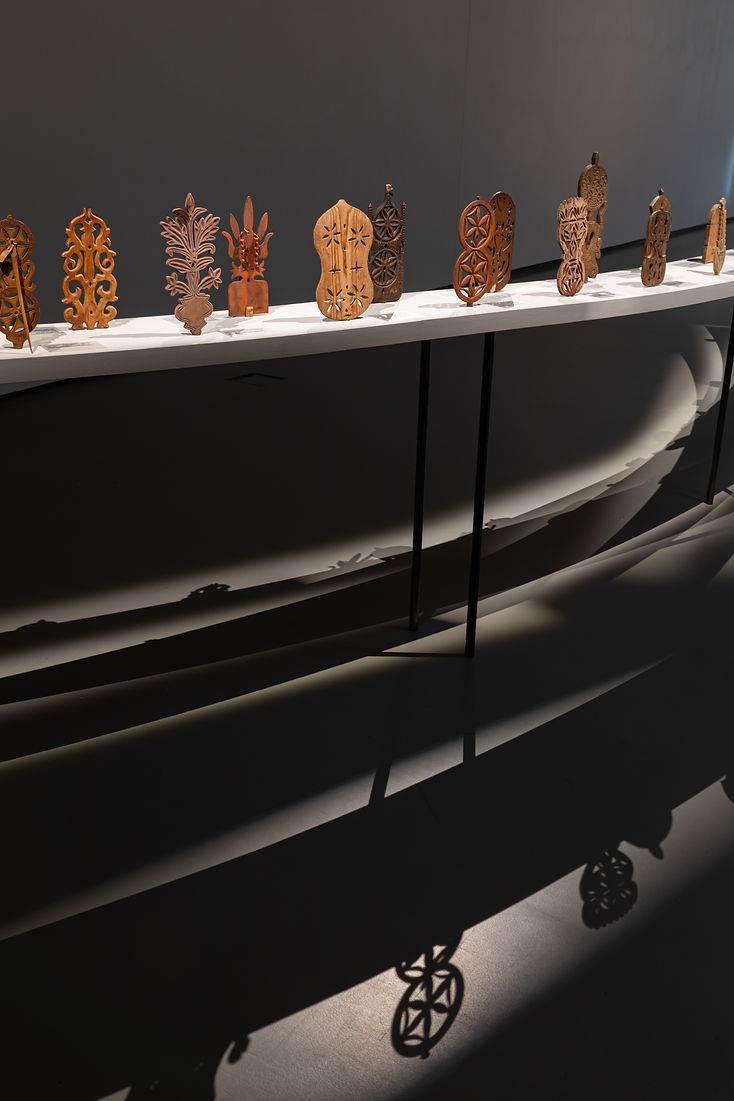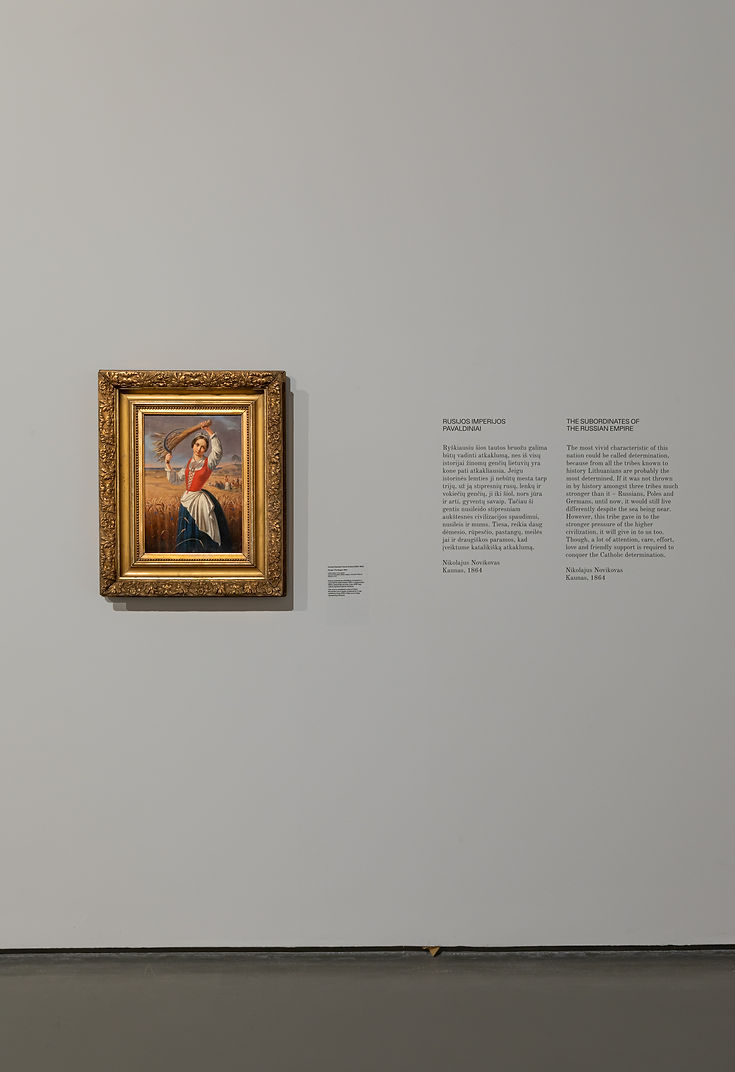My practice is all about observation, analysis, and response to the questions that are rooted at a local scale but affect larger social, urban, and ecological issues. Through research, experiments, and permanent projects, I try to learn new ways to collaborate, create new knowledge, and build healthy places that respect their environment.
INDIGENOUS NARRATIVES
2021
exhibition design
The “Indigenous narratives” exhibition explores the Lithuanian ethnos or, more precisely, the country dwellers of the 19-20th century who experienced the least influence of modernisation and preserved the most authentic and archaic culture. They are the ones that are bearing the ethnic identity, without whom the nationhood would not have been established. However, the social status and role of those “others” in the historical perspective always remained insignificant, as they had rather little influence in the political debate.
Taking the idea on the life of countrymen as seen from the outside and lived in the reality, the exhibition design creates tension, spanning from classical paintings to intimate vocal stories of over 150 humans. It also enables a new type of encounter at the eye level that invites to experience real size group photo prints, “step into” the paintings, and permits the exhibition visitors sharing their emotions over the “field furrows” of the main exhibition structures.








The field of barley that arose next to the National Gallery of Art responds to questions of identity and memory raised in the ongoing exhibition and aims at stimulating the city dwellers’ confrontation with nature, agriculture and the rural people, whose calm and temperate life is perpetually disturbed by the changing political and economic factors.
When most city dwellers’ domestic life is strictly attuned according to the days of the week, the country person’s life is more strongly affected by the seasons of the year and the changing weather, on which the pace of their life and relationship with their home and community depends. An opportunity to have their own land and work it gives meaning to and shapes the rural person’s life and existence, helping them to understand the world and themselves better.
While many great political changes and power struggles are concentrated in cities, the Lithuanian countryside at different historical
periods has also lived through transformations. More than once occupational regimes attempted to limit the property and activity rights of the people, whether it was done, for example, based on feudal or socialist regime grounds. However, even the compulsory hard labour,
deprivation of land, deportation and the disturbance of the ethnic fabric have not prevented peasants from enduring hardship, keeping their faith and at the same time preserving the inherent cultural basis, inevitably
connected to nature.

Curator - Margarita Matulytė
Exhibition architect - Sigita Simona Paplauskaitė
Graphic design - Laura Grigaliūnaitė
Coordinator - Ugnė Makauskaitė
Author of the sound installation - Marius Juknevičius
Author of installation “The Field of Times” - Sigita Simona Paplauskaitė
Lighting designer - Eugenijus Sabaliauskas
Architecture implementation coordinator - Mindaugas Reklaitis
Communications coordinator - Goda Aksamitauskaitė
Photography - Gintarė Grigėnaitė
Website solution - Ugnė Marija Makauskaitė, Laurynas Antanavičius
Organiser - National Gallery of Art of the Lithuanian National Museum of Art